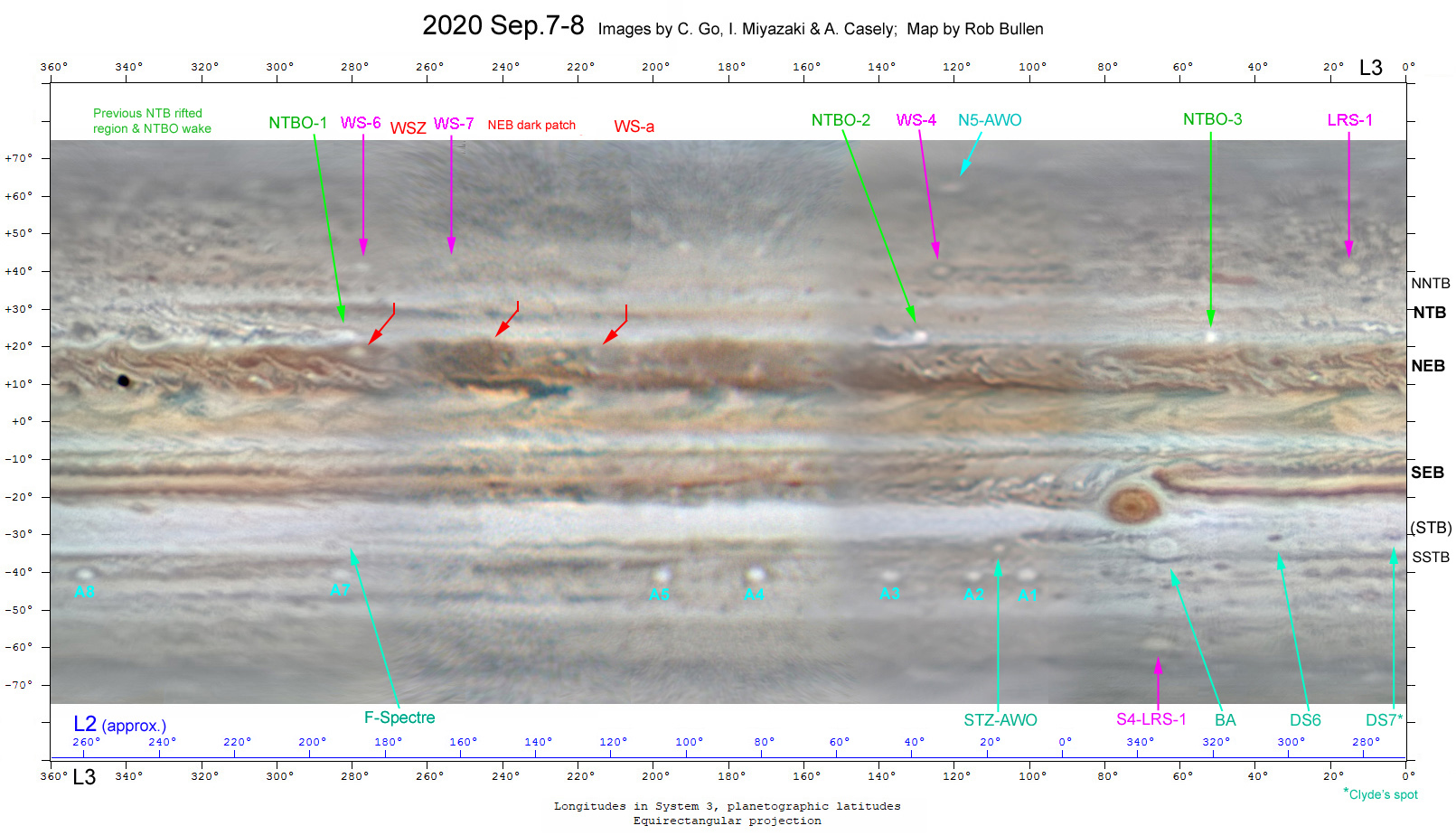Jupiter in 2020, Report no.7: Global map & NTBs outbreak
(1) Global map on Sep.7-8.
Figure 1 is a map of the whole planet, prepared by Rob Bullen, in System III, showing the present state of the planet a week before Juno’s perijove-29. Figure 2 is a map of the low latitudes in System I, more accurately showing the EZ (which still has strong ochre colour) and the NTB (see below).
(2) The NTBs jetstream outbreak.
This outbreak is increasingly spectacular. There are now three brilliant super-fast plumes, each one developing a turbulent wake which disrupts the entire width of the NTropZ and NTB(S). The detailed appearance of the large dark bluish patches in the wake of plume 1 strongly suggests that they are indeed anticyclonic vortices, as Agustin Sanchez-Lavega proposed.
A complete set of maps and a drift chart are regularly updated by Shinji Mizumoto on the ALPO-Japan web site (http://alpo-j.sakura.ne.jp/Latest/j_Cylindrical_Maps/j_Cylindrical_Maps.htm). His latest chart is attached as Figure 3.
Detailed notes on some aspects of the outbreak are given in the PDF version of this report, link below.
Figure 4 is a collection of images of the outbreak from August 26-31, in RGB & IR & CH4 wherever possible. Just one or two of the best images on each rotation are shown; only one rotation was not covered. Many thanks to all the observers who have produced such excellent coverage.
How long will the plumes last? In previous outbreaks, a plume typically persisted until it caught up with the turbulent wake of the next plume, then it collapsed and disappeared within ~2 days. From present speeds, and a range of assumptions about future speeds, I estimate encounters as follows:
Plume 3 (approaching wake of plume 1), Sep.25 to Oct.1; Plume 2 (approaching wake of plume 3), similar dates; Plume 1 (approaching wake of plume 2), Oct.15-19.
So each plume is likely to disappear within a few days of these dates – unless yet another plume appears to complicate matters.
Text of report with miniature figures (PDF): Report-no-7_2020sep12.pdf
Figure 1 (small copy below): Rep7Fig1_Map_L3_2020sep07-8.jpg
Figure 2: Rep7Fig2_Map_L1_2020sep07-8_RB.jpg
Figure 3: Rep7Fig3_NTBs outbreak_drift chart_1000.jpg
Figure 4: Rep7Fig4_NTBO_Aug26-31.jpg
Figure 5: Rep7Fig5_2020sep06_Chris-Go-spot-labeld.jpg

| The British Astronomical Association supports amateur astronomers around the UK and the rest of the world. Find out more about the BAA or join us. |
